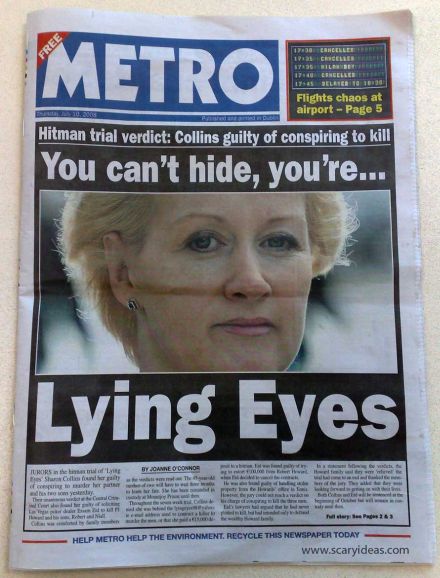 Research by academics at two universities have concluded that the common belief of lying eyes is a myth.
Research by academics at two universities have concluded that the common belief of lying eyes is a myth.
Many psychologists think when a person looks up to their right they are likely to be telling a lie and glancing up to the left is said to indicate honesty.
However, the experts from Edinburgh University and Hertfordshire University carried out tests and found the theory to be wrong.
The research appeared in the online journal Public Library of Science ONE.
The claimed link between eye movements and truth telling is a key element of neuro-linguistic programming (NLP), a method of enhancing people’s lives using psychological techniques.
One aspect of NLP involves teaching people about the relationship between eye movements and thought.
According to the theory, when right-handed people look up to their right they are likely to be visualising a “constructed” or imagined event.
In contrast when they look to their left they are likely to be visualising a “remembered” memory.
For this reason, when liars are constructing their own version of the truth, they tend to look to the right.
The idea was tested by filming volunteers and recording their eye movements as they told the truth or lied.
A second group of volunteers was then asked to watch the films and try to detect the lies by watching the eye movements.
Co-author Dr Caroline Watt, from Edinburgh University, said: “A large percentage of the public believes that certain eye movements are a sign of lying, and this idea is even taught in organisational training courses.
“Our research provides no support for the idea and so suggests that it is time to abandon this approach to detecting deceit.”
Psychologist Professor Richard Wiseman, from Hertfordshire University, said: “The results of the first study revealed no relationship between lying and eye movements, and the second showed that telling people about the claims made by NLP practitioners did not improve their lie detection skills.”
A follow-up study involved analysing videos of high-profile press conferences in which people appealed for help in finding missing relatives, or claimed to have been victims of crime.
While some were telling the truth, others turned out to be lying.
Again, there was no evidence of a correlation between lying and eye movements.
Five Ways to Detect a Liar
Prof Richard Wiseman outlined other ways to spot a liar:
- Me, myself I: Liars make up stories that never actually happened, and so tend to reduce the number of times they refer to themselves. Look out for any sudden drop in words like me, mine and I
- Shifty: Lying is difficult and people tend not to move around when they are concentrating on something. Be wary if a person suddenly becomes very still
- Umm … err: Liars are far more hesitant than truth tellers and tend to stumble over their words. Listen out for tell-tale umms and errs.
- Timing: Liars often have to think about what they are going to say before they speak. Be suspicious if someone suddenly pauses before starting to answer a question.
- Token gesture: Liars tend to move their hands around more than truth tellers. Be wary if someone suddenly starts covering up their mouth or touching their hair as they chat.
Source: http://www.bbc.co.uk/news/uk-scotland-edinburgh-east-fife-18812072
